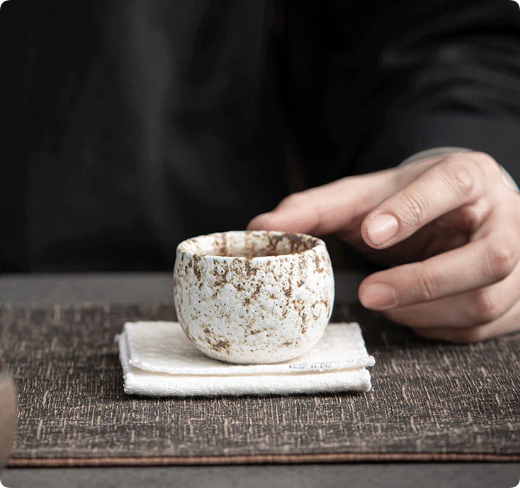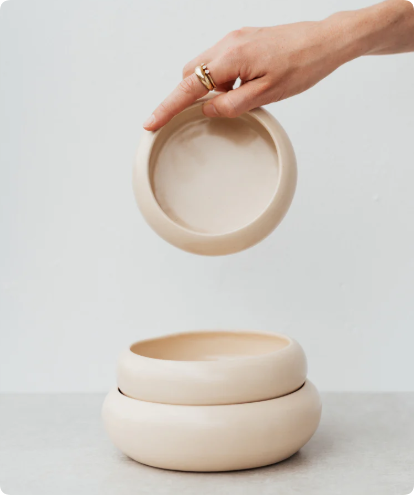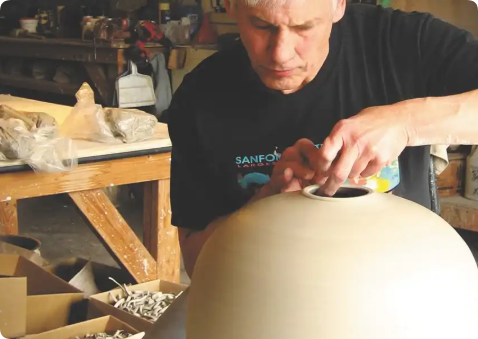Introduction
The timeless beauty of Japanese design has long been a source of fascination for artists, architects, and industrial designers worldwide. In recent years, Japan’s aesthetic philosophy has made a significant impact on the global ceramic tableware industry. This blog explores how key Japanese principles like wabi-sabi, minimalism, and craftsmanship are shaping contemporary ceramic tableware trends, offering inspiration to designers and manufacturers globally.
The Core of Japanese Aesthetic Philosophy
1. Wabi-Sabi: Embracing Imperfection
At the heart of Japanese design lies wabi-sabi, a philosophy that celebrates imperfection, impermanence, and the natural state of things. This principle is visible in ceramic tableware with:
- Uneven edges and organic shapes.
- Earthy textures and muted, natural colors.
- Glazes that allow for cracks, creating a unique patina over time.
Example:

A simple teacup with an unpolished surface and subtle glaze variations becomes a functional piece of art, embodying the beauty of imperfection. This concept resonates deeply with modern consumers who value individuality and authenticity in design.
2. Minimalism: Less Is More
Japanese minimalism is characterized by simplicity and functionality. In tableware design, this is expressed through:
- Clean lines and uncluttered forms.
- Monochromatic or limited color palettes.
- Multi-functional designs that cater to a variety of uses.
Example:

A set of stackable ceramic bowls with a neutral tone offers aesthetic appeal and practical utility. This design approach aligns with the modern “less clutter, more purpose” lifestyle trend.
3. Craftsmanship: The Human Touch

The dedication to meticulous craftsmanship is evident in Japanese ceramics. Traditional techniques, such as hand-throwing on the pottery wheel, ensure each piece is unique, reflecting the artisan’s skill and emotion. Crafts like raku pottery, with its hand-molded forms and unpredictable glazes, showcase this philosophy.
Global Impact of Japanese Aesthetic Philosophy
The influence of Japanese design principles can be observed in contemporary ceramic tableware trends worldwide. Let’s explore some notable examples:
1. Scandinavian-Japanese Fusion (Japandi)
Scandinavian and Japanese aesthetics share a love for minimalism and natural materials. This fusion has created the “Japandi” style, characterized by:
- Muted tones like beige, grey, and soft pastels.
- Simple forms with subtle details, such as soft curves or understated textures.
Example:
Brands like Muji and IKEA have embraced Japandi design, creating products that embody functionality and beauty.
2. Sustainable Practices
Japanese respect for nature inspires manufacturers globally to embrace eco-friendly materials and techniques. For instance:
- Using sustainable clay and natural glazes.
- Adopting energy-efficient kilns for firing ceramics.
3. Functional Art
Japanese ceramics blur the line between functionality and art. This has driven a global trend of collectible tableware that is both practical and decorative.
Market Insight:
The rising demand for artisanal, handcrafted ceramics in markets like the U.S. and Europe highlights the appeal of Japanese-inspired designs.
Table: Comparing Japanese vs. Global Ceramic Tableware Trends
| Aspect | Japanese Tableware | Global Interpretation |
|---|---|---|
| Philosophy | Wabi-sabi (imperfection, simplicity) | Modern minimalism with industrial precision |
| Color Palette | Muted, earthy tones | Broader spectrum, including bold and vibrant colors |
| Shapes | Organic and irregular | Balanced mix of organic and symmetrical forms |
| Techniques | Handcrafted with traditional methods | Combination of handmade and machine-crafted techniques |
| Sustainability | Focus on natural materials and longevity | Increased adoption of recycled materials and energy-saving processes |
| Market Appeal | High-end, niche market | Mass appeal with a range of price points |
How to Integrate Japanese Design Principles into Your Product Line
1. Design with Purpose
Emphasize functionality without compromising on aesthetic appeal. For example, create multi-functional tableware that serves various needs.
Implementation Tip:
Consider producing stackable or interlocking designs that save space while maintaining elegance.
2. Use Natural Materials
Opt for clay, stoneware, or porcelain that highlights natural textures and earthy tones. Ensure that the materials used align with sustainability goals.
3. Embrace Imperfections
Allow for slight variations in glazing or shaping to celebrate the handmade quality of each piece. This approach resonates with consumers looking for authentic, one-of-a-kind items.
4. Keep it Simple
Stick to clean lines and minimalist designs that appeal to a broad audience while maintaining the spirit of Japanese aesthetics.
Case Study:
A manufacturer integrating these principles saw a 25% increase in sales in the European market by focusing on Japanese-inspired designs.
Additional Considerations for B2B Buyers
1. Adapting to Regional Markets
Japanese aesthetics may need subtle adjustments to cater to regional preferences:
- In the Middle East, add intricate patterns while retaining minimalist shapes.
- In North America, highlight functionality and sustainability.
2. Marketing Strategies
- Emphasize the story behind the product, including the craftsmanship and inspiration from Japanese culture.
- Use visually appealing packaging that aligns with the minimalistic style.
Conclusion: Why EKA Is Your Partner in Japanese-Inspired Ceramic Tableware
EKA, a trusted name in ceramic tableware manufacturing, draws inspiration from global trends, including the timeless philosophy of Japanese design. Our team excels in producing high-quality OEM and ODM ceramics that balance tradition and modernity, catering to global buyers like home and kitchen retailers, gift suppliers, and cross-border e-commerce sellers.
By choosing EKA, you are partnering with a manufacturer that understands the nuances of cultural design and the demands of the international market. Let us help you bring Japanese-inspired beauty to your customers with ceramics that are as functional as they are artistic.
Final Thoughts
Japanese aesthetic philosophy offers a wealth of inspiration for modern ceramic tableware. By embracing principles like wabi-sabi, minimalism, and craftsmanship, global manufacturers can create products that resonate deeply with consumers. As these trends continue to shape the market, now is the perfect time to explore how EKA can bring your vision to life. Contact us today to learn more about our services.

